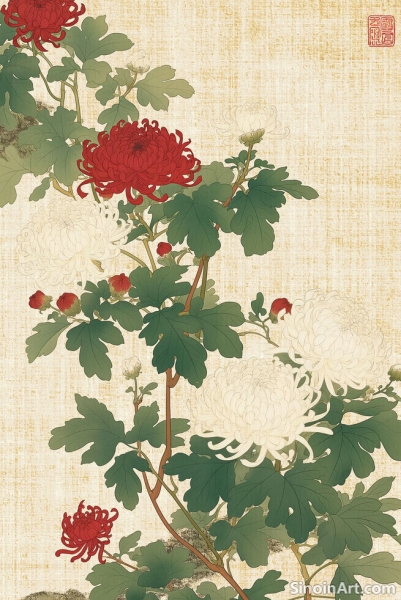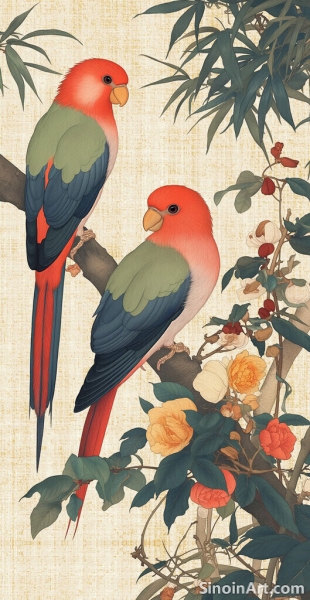Gongbi Painting on Silk: Tradition and Technique
|
The use of silk as a painting surface in Gongbi is deeply rooted in tradition, offering a unique texture and luminosity that enhances the delicate details of the artwork. The preparation and handling of silk require specific techniques and a deep understanding of its properties. It is the material of choice for many traditional Gongbi artists, and for good reason.  Silk, being a smooth and lustrous material, presents both challenges and opportunities for the artist. Its absorbency is different from that of paper, requiring a different approach to the application of ink and color. The artist must be skilled in controlling the flow of paint on the silk surface to prevent bleeding and achieve the desired level of detail. The art needs to work with the material, not against it.  Before painting, silk must be carefully prepared, a process that typically involves sizing it with alum or other substances to create a surface that is receptive to paint. This step is crucial in ensuring that the colors do not bleed or run, thus creating defined lines and washes. Preparation is a crucial first step for the artist.  Working on silk is a delicate process, as the material is easily damaged. The artist must handle the silk with care, avoiding rough movements that could cause creases or tears. This is all part of the painstaking process of Gongbi painting. The tradition of using silk in Gongbi painting goes back centuries, reflecting the value placed on this luxurious material in Chinese culture. The combination of intricate brushwork and the smooth surface of silk creates a unique visual experience that is both elegant and captivating. The material itself becomes a component of the art, as much as the painting that is placed on it. |
Tag : Gongbi on silk, Chinese silk painting, silk painting techniques, traditional art materials, painting on fabric
Related information
- The Use of Gold Leaf and Other Embellishments in Gongbi
- Gongbi and the Use of Bird Motifs: Symbolism and Beauty
- The Role of Line in Gongbi: Structure and Expression
- The Use of Gold Leaf in Gongbi: Adding a Touch of Opulence
- Gongbi and the Art of Botanical Illustration
This article explores the use of gold leaf and other embellishments in Gongbi painting, detailing their application, symbolic significance, and contribution to the visual richness and overall aesthetic of the artwork.
The depiction of birds is a prominent theme in Chinese Gongbi painting, often serving as a means to explore the beauty, freedom, and symbolic richness of the natural world. Artists often render a diverse array of birds, from majestic eagles and phoenixes to the more humble songbirds, imbuing them with specific cultural meanings and stylistic characteristics. The birds add a vibrant and often symbolic element to these pieces.
This article focuses on the importance of line in Gongbi painting, detailing the "gougou" outlining method, the variation in line weight, and the use of lines to convey structure and expression in the artwork.
Discusses the use of gold leaf in Gongbi painting, its application techniques, symbolism, and contribution to the opulence and visual impact of the art.
This article explores the relationship between Gongbi painting and botanical illustration, highlighting the meticulous detail, precise linework, accurate color layering, and how these techniques contribute to both artistic beauty and scientific accuracy in the depiction of plants.